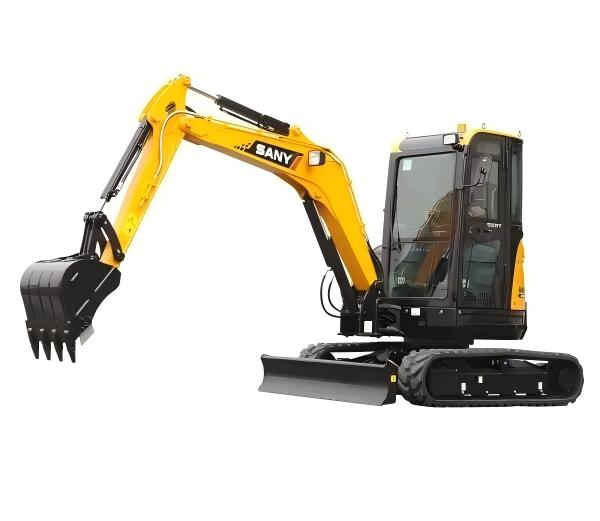Urban construction presents a distinct set of challenges compared to rural projects. The confined spaces, limited access, and strict environmental regulations demand specialized machinery. In city environments, the right excavator can make a significant difference in project efficiency and compliance. By examining crucial features like compact designs and versatile attachments, builders can enhance operational success. This article explores essential features that excavators should possess to excel in urban settings, helping construction professionals make informed decisions for their projects.

Why Urban Construction Demands Specialized Excavator Features
Tight Workspaces and Restricted Access
Urban construction sites often have limited space and accessibility. Maneuverability within narrow pathways is crucial. Compact excavators are designed for such environments, offering reduced track width and shorter boom lengths, allowing operators to navigate confined areas without sacrificing performance. Their ability to fit through narrow openings and operate within restricted zones makes them indispensable for urban projects. This adaptability ensures operators can complete essential tasks confidently while avoiding disruptions to nearby structures, pedestrian traffic, and sensitive city infrastructure.
Noise, Emissions and Urban Regulations
In cities, construction noise and emissions significantly impact residents. Urban regulations typically enforce strict noise and pollution standards. Excavators with lower operating noise levels and emissions, such as those with advanced exhaust systems, help meet these requirements. Choosing models engineered for quieter operation and reduced carbon footprints ensures compliance and fosters good community relations. These environmentally conscious features also support long-term sustainability goals and reduce disturbance, helping crews maintain productivity in regulated metropolitan zones.
Key Feature #1: Compact Size and Retractable Undercarriage
Operating Weight, Boom Length and Track Width
Compact excavators are tailored for urban operations with optimal operating weights, manageable boom lengths, and adjustable track widths. These specs ensure they don’t compromise power for size. A lighter operating weight allows for easier transportation, while a shorter boom facilitates work in confined vertical spaces. Adjustable track widths provide versatility, ensuring stability and maneuverability. This smart combination creates a machine capable of handling demanding tasks while still fitting the tight constraints found throughout modern city work sites.
Examples from the SANY Mini Excavator Lineup
SANY’s Mini Excavator lineup exemplifies feature-rich compact designs. Models like the SY17C provide a sturdy retractable undercarriage, improving accessibility and ease of use in tight spaces. Their robust construction ensures durability, while maintaining manageable sizes. Such features position them as ideal choices for urban construction, enabling high performance without taking up excessive space. These machines also deliver consistent reliability, helping contractors stay on schedule and adapt quickly as dense urban job conditions shift.

Key Feature #2: Zero-Tail or Minimal Tail Swing Design
Why Zero-Tail Matters in Urban Projects
Zero-tail swing excavators are vital for city projects. Their design enables operation without the counterweight extending past the track width, crucial in confined areas. This feature minimizes the risk of damaging surrounding infrastructure and allows work to continue efficiently even in dense urban environments. It ensures safe and effective maneuvering on crowded sites. Contractors depend on this capability to maintain accuracy and avoid costly delays caused by restricted movement in active city zones.
How Models Like the SY35U Deliver This
The SANY SY35U is a perfect embodiment of zero-tail swing design. Its compact build allows free rotation without the tail extending beyond its track width, offering precision in tight areas. This model combines minimal tail swing with exceptional stability, making it a leading choice for urban contractors who need reliable performance in cramped conditions. Its thoughtful engineering gives operators the confidence to work efficiently, even when space is severely limited or constantly shifting.
Key Feature #3: Load-Sensitive Hydraulic System & Attachment Versatility
The Role of Auxiliaries and Multiple Attachments
An excavator’s hydraulic system greatly impacts its performance and adaptability. Load-sensitive hydraulics ensure that power is precisely distributed, enhancing efficiency. Additionally, the availability of auxiliary lines supports various attachments, broadening operational capabilities. This versatility allows operators to switch between tasks swiftly, increasing productivity on multifaceted urban projects. Such flexibility proves essential where crews must complete diverse tasks quickly without bringing additional large machines to constrained sites.
How the SANY Mini Excavator Supports Over 40 Attachments
SANY Mini Excavators extend their utility by supporting over 40 different attachments. This range includes buckets, grapples, augers, and more, allowing customization for specific tasks. The ability to seamlessly switch tools means that one machine can perform multiple roles on-site, significantly optimizing time and labor for urban construction projects. This expansive attachment compatibility gives contractors the advantage of adapting instantly to changing project needs without equipment downtime.
Conclusion
Choosing the right excavator features can dramatically affect the success of urban construction projects. Compact size, zero-tail swing, and versatile hydraulics stand out as essential elements. By opting for models that emphasize these features, like those in the SANY Mini Excavator lineup, builders enhance their ability to meet urban demands efficiently and effectively. Understanding these options allows for better decision-making, ensuring projects are completed with precision and compliance. As cities continue to grow, selecting adaptable equipment becomes even more important for maintaining speed, safety, and operational reliability.